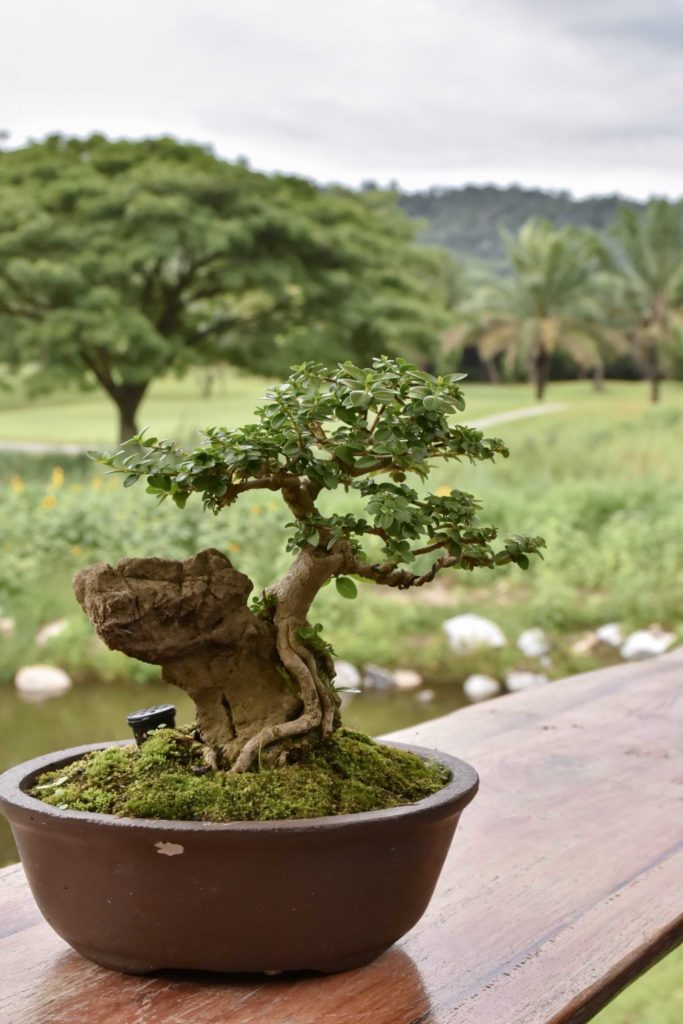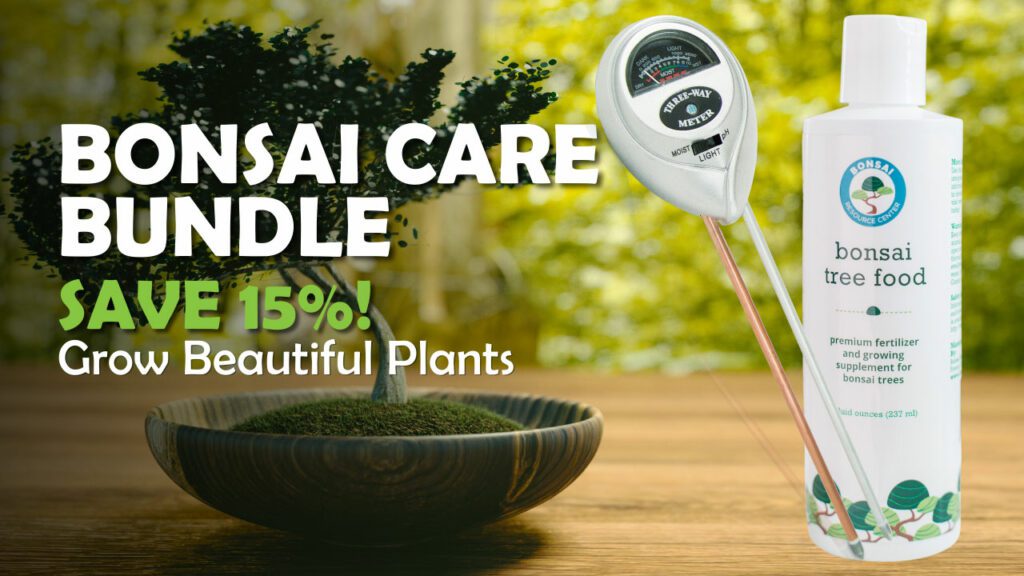You’ve done it! Through patience, perseverance, and a watchful eye, you’ve created a stunning bonsai specimen. But not so fast! There’s a final factor to your masterpiece:
You need to choose a bonsai tree pot.
When it comes time to display your bonsai, don’t overlook the container in which it’s placed. Bonsai pots play as much a role in creating the “bonsai effect” as the trees themselves. When properly chosen, they’re the final piece of the puzzle—the cycle of harmony completed. (Plus, they keep your tree alive!)
This bonsai tree pot guide and FAQ will tell you everything you need to know, so you can jump right in and pick your perfect pairing.
Bonsai Tree Pot FAQ
When you’re just getting started, it’s helpful to understand what makes bonsai pots different than your standard terra cotta planter—and why that matters. So before we teach you how to select the perfect pot, let’s answer a few common beginner’s questions.
Do Bonsai Trees Need Special Pots?
While bonsai tree pots don’t need to be forged from the volcanic rocks of Mt. Fuji, there are a few elements that make them better suited for bonsai than other containers.
First, bonsai tree pots are designed to enhance the “bonsai effect.” That is, when chosen intentionally, they add to the illusion your tree has been plucked from nature and is simply sprouting from the tray. The right pot will also highlight and complement the elements of balance and harmony you’ve nurtured in your tree.
Second, bonsai tree pots are designed to meet the specific demands of the art form. They’re equipped with proper wiring and drainage holes, engineered for standard width and length requirements, and much shallower than traditional planters. Each of these components serves a practical purpose in bonsai tree care.
Why Do Bonsai Need Shallow Pots?
While shallow containers help dwarf juvenile bonsai trees, they’re also helpful once you’ve achieved your final style. Because trees grow slower with constricted roots and limited soil, planting a “finished” bonsai in a shallow container helps make it easier to maintain the desired shape.
Additionally, shallow containers are unobtrusive. They keep the eye on the tree and enhance the sensation that you’re looking at a perfect miniaturized snapshot of the natural world.
Why Are Bonsai Tree Pots So Expensive?
While there are numerous grades of bonsai tree pots, some higher-tier products can give new buyers sticker shock. Understand that the art of making bonsai pots is centuries old and requires as much mastery as growing a tree itself. While you don’t need to break the bank, choosing a well-constructed, quality pot is an essential part of practicing the art of bonsai.
How to Choose a Bonsai Tree Pot
Masculine vs. Feminine Aesthetics
You may have heard that a bonsai tree pot should complement the masculine or feminine features of the tree it houses—but what does that mean?
Some tree characteristics are considered masculine: thick trunks, heavy branches, sharp angles, and deadwood. Others are considered feminine: rounded silhouettes, smooth or light-colored bark, thin trunks, and flowers.
Determine the balance of your particular tree, and choose a pot to match it.
Masculine Pot Features
- Angular: Square, rectangular, hexagonal
- Minimal: No embellishment or glaze, plain feet, earth tones/dark colors
- Severe: Straight lines, angular edges, “heavy” appearance or material
Feminine Pot Features
- Curved: Oval, round, ellipses; curved edges
- Ornamental: Decorative designs, glazes, tapered lips and feet
- Soft: Cream colors, pastels, cheerful tones
Functionality
Size
Your tree’s root system should have a little wiggle room beneath the soil. Choose a pot that leaves an inch between the tips of the roots and the sides of the container, or perform root trimming before planting.
- Width: As a rule of thumb, an oblong (oval or rectangle) bonsai tree pot should be roughly ⅔ as wide as your tree is tall. Evenly proportioned pots, like squares and circles, should be ⅓ as wide as your tree is tall. For trees that are shorter than they are wide, apply the same rules to the canopy’s spread.
- Depth: To constrain the roots and promote balance, choose a container no deeper than the width of your tree’s trunk at soil level. Trees that fruit, flower, or have larger-than-average foliage appear more balanced in slightly deeper containers.
Drainage & Wiring
- Drainage holes: Because your tree grows in a constrained environment, proper drainage is an essential part of preventing root rot. Traditional bonsai containers will have at least one drainage hole, but we recommend choosing one with two to four holes—or drilling more yourself—to ensure proper soil aeration.
- Wiring holes: Drainage holes can moonlight as wiring holes for trees that are top-heavy or precariously angled. Weave wire through the holes and drainage mesh, and affix to the roots of your tree to help it stand upright in the soil.
Where to Buy Bonsai Pots
There is no shortage of places to buy bonsai tree pots: online, at a local shop, even at pottery conventions. But your local nursery is a great place to start your search for well-crafted options. Take photos of your tree to share with nursery staff so they can help you pick the perfect match.
Bonsai tree pots are also available online, but be wary: if the price seems too good to be true, it probably is. The difference between a poorly and expertly constructed pot is profound and can greatly impact the final appearance of your tree.
Where to Buy Handmade Bonsai Tree Pots
If you’re eager to buy a container crafted with the same care and affection you’ve given your tree, we suggest purchasing a handmade bonsai tree pot. There are plenty of talented artists practicing the craft, and it can be an exciting journey to find a pot or artist you connect with.
Here are a few to get you started:
- Yukimono Bonsai Pots
- American Bonsai Co.
- NE Bonsai
- Superfly Bonsai
Have more questions about bonsai tree pots? Let’s keep the conversation going in our Facebook group.
Bonsai With Us!
The Bonsai Resource Center is here to help you learn the best bonsai tree care and provide you with the tools you need to keep your tree healthy and strong. Explore our other articles, visit our online shop, and connect with other bonsai lovers in our Facebook group to learn everything you need to know about this rewarding hobby!
More Bonsai Tree Care Resources
6 Easy Steps to Wire Bonsai Trees
Growers Guide: How to Make a Bonsai Tree



